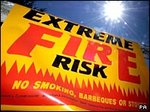Office of Public Sector Information:
The Regulatory Reform (Fire Safety) Order 2005, England & Wales
Starting Oct 1st 2006 it was compulsory to complete a fire risk assessment for any premises used for business. This blog guides you about Fire Risk Assessments.

Posted by
Fire Risk Assessments
at
6:26 AM
0
comments
![]()
Labels: Fire Alarms, Fire Equipments, Fire Extinguisher, Fire Fighting, Fire Hazard, Fire Risk, Fire Risk Assessments, Fire Safety, Fire Safety Order, Fire Shop, UK Fire
Posted by
Fire Risk Assessments
at
1:22 AM
0
comments
![]()
Labels: Fire Alarms, Fire Bregade, Fire Brigades Union, Fire Risk, Fire Risk Assessments, Fire Safety, Fire Safety Order, Fire Service, UK Fire
Posted by
Fire Risk Assessments
at
3:38 AM
0
comments
![]()
Labels: Fire Classes, Fire Fighting, Fire Hazard, Fire Risk, Fire Risk Assessments, Fire Safety, Fire Safety Order, Fire Service, Fire Watch, UK Fire
Posted by
Fire Risk Assessments
at
6:34 AM
0
comments
![]()
Labels: Fire Hazard, Fire Risk, Fire Risk Assessments, Fire Safety Order, UK Fire